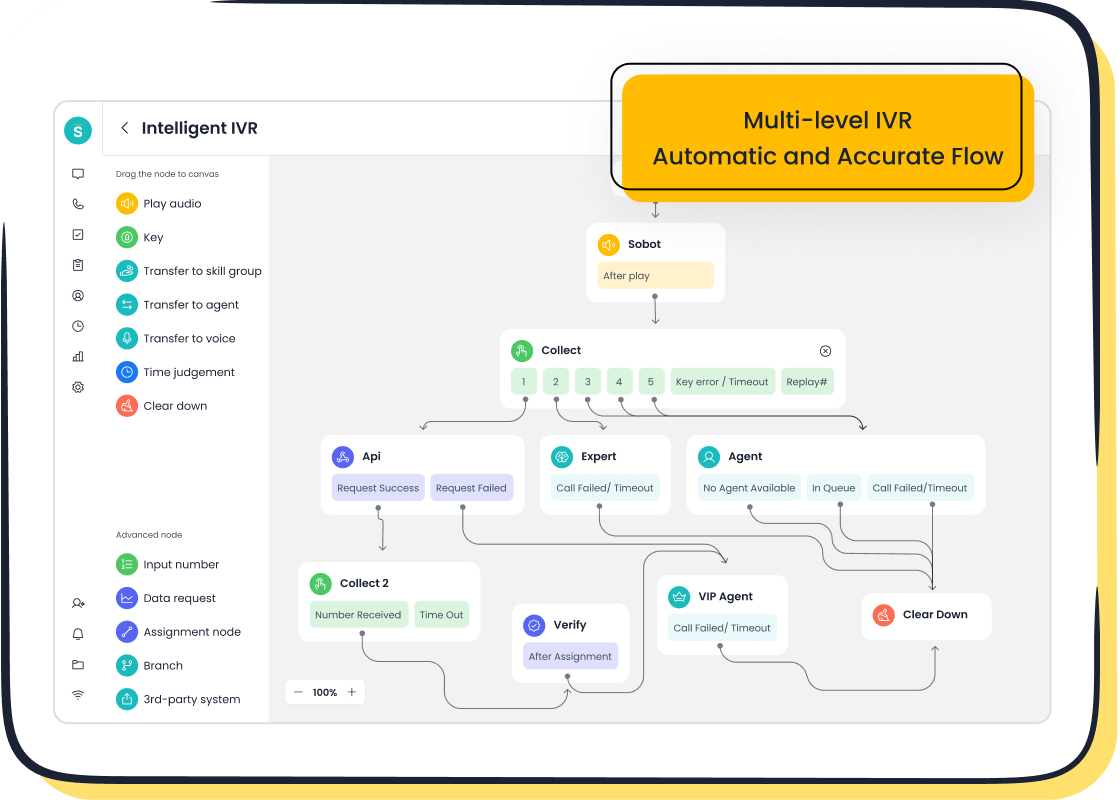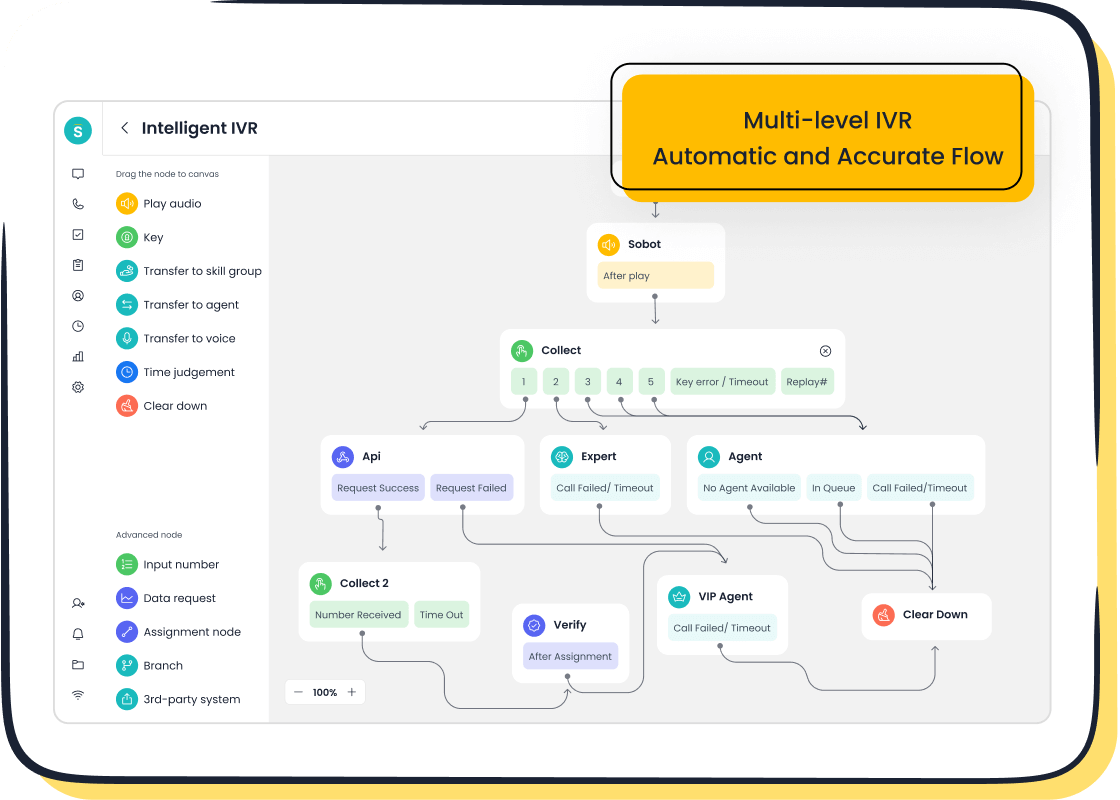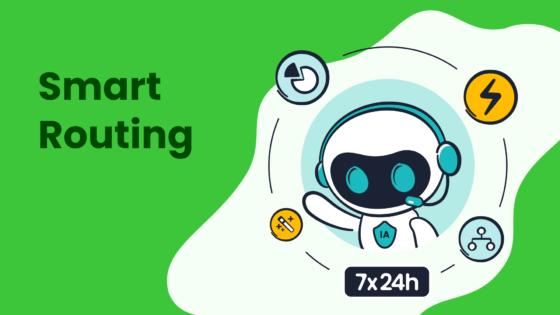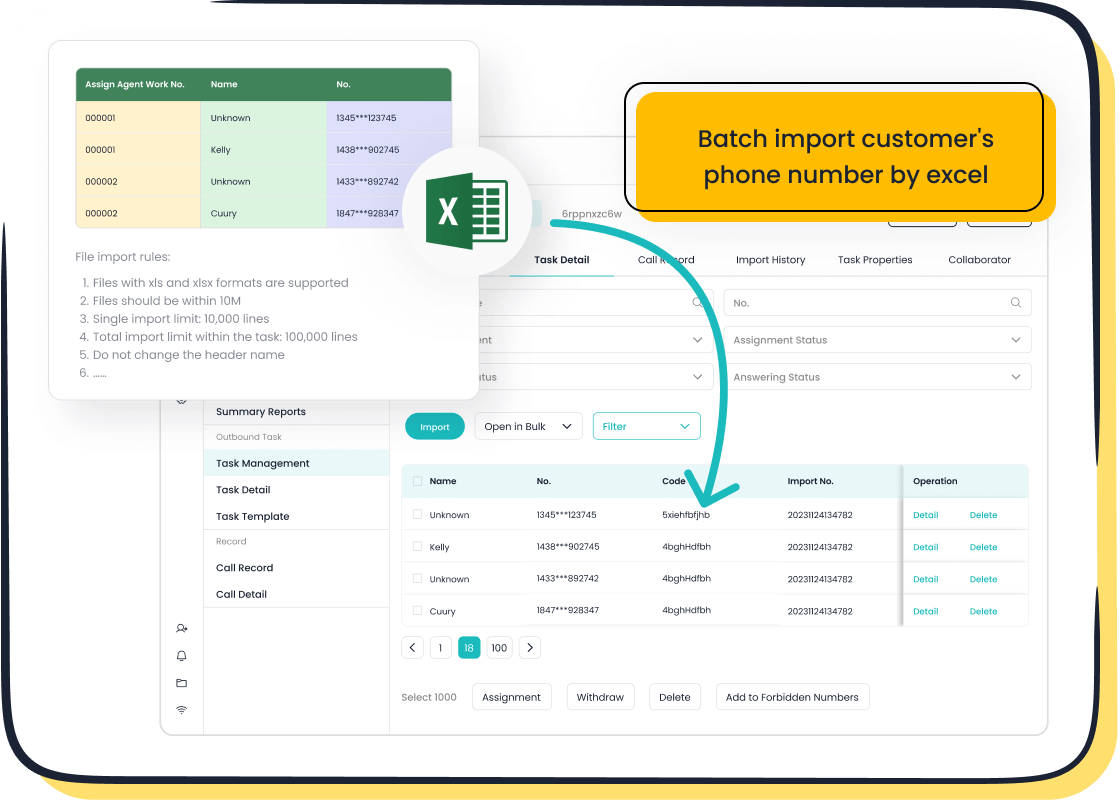Top Customer Service KPIs to Measure Success

Tracking customer service KPIs is essential for evaluating and enhancing the quality of support. Metrics such as customer satisfaction score, first response time, and customer retention rate provide valuable insights into how effectively your team addresses customer needs. For instance, improving customer satisfaction remains a primary objective for 30.6% of service representatives worldwide. Additionally, retaining customers is more cost-effective than acquiring new ones. By prioritizing these KPIs, businesses can boost customer satisfaction and foster loyalty. Sobot’s innovative solutions streamline this process, empowering you to consistently deliver outstanding customer service.
Understanding Customer Service KPIs
What Are Customer Service KPIs?
Customer service KPIs are measurable metrics that help you evaluate the performance of your support team. These indicators focus on specific aspects of customer interactions, such as satisfaction, efficiency, and retention. For example, metrics like Customer Satisfaction Score (CSAT) and Net Promoter Score (NPS) provide insights into how well your team meets customer expectations. Unlike general metrics, KPIs are directly tied to your business goals, making them essential for tracking progress and identifying areas for improvement.
By focusing on KPIs like First Contact Resolution (FCR) and Average Handle Time (AHT), you can assess the efficiency of your operations. Comparing these KPIs to industry benchmarks helps you understand where your team excels and where adjustments are needed. For instance, keeping surveys short and asking follow-up questions can improve the accuracy of CSAT and NPS measurements.
Why Are Customer Service KPIs Important?
Tracking customer service KPIs is crucial for optimizing your support processes. These metrics provide actionable insights that help you improve both agent performance and customer satisfaction. For instance, monitoring issue resolution KPIs allows you to identify volume spikes and backlogs, enabling proactive responses like additional training or workload adjustments. Similarly, efficiency KPIs help you manage costs by addressing high handle times or overtime issues.
Tip: Regularly reviewing KPIs can reveal high-performing agents and skills gaps, helping you allocate resources effectively.
Customer service KPIs also directly impact your bottom line. Research shows that businesses focusing on customer service are 60% more profitable than those that do not. Additionally, increasing customer retention by just 5% can boost profits by 25% to 95%. These statistics highlight the importance of using KPIs to enhance both customer satisfaction and business outcomes.
How KPIs Drive Customer Retention and Business Growth
Customer service KPIs play a vital role in retaining customers and driving growth. High retention rates indicate strong customer loyalty, which directly affects profitability. Acquiring new customers costs five times more than retaining existing ones, making retention a cost-effective strategy. Metrics like CSAT and NPS help you understand customer sentiment, allowing you to address pain points and improve the overall customer experience.
A case study of a major retail chain illustrates this point. By focusing on CSAT and NPS, the company improved its CSAT by 15% and increased its NPS from 25 to 45. These improvements were achieved by analyzing metrics and making operational changes. Such examples demonstrate how tracking and optimizing KPIs can lead to tangible benefits for both customers and businesses.
Key Insight: Effective KPI tracking not only enhances customer satisfaction but also streamlines processes, ensuring your team performs at its best.
Top Customer Service KPIs to Track

Customer Satisfaction Score (CSAT)
Customer Satisfaction Score (CSAT) measures how satisfied customers are with your service. It is calculated by asking customers to rate their experience on a scale, typically from 1 to 5 or 1 to 10. A higher score indicates greater satisfaction. Tracking CSAT helps you identify areas where your team excels and where improvements are needed. For example, if your CSAT score is consistently low after specific interactions, you can investigate and address the root cause.
Comparing your CSAT score against industry benchmarks is essential. According to the American Customer Satisfaction Index, industries like consulting and e-commerce achieve average customer satisfaction scores of 84 and 82, respectively. These benchmarks provide valuable insights into how your performance stacks up against competitors. However, remember that unique business contexts may influence your results.
Tip: Keep surveys short and straightforward to encourage more responses. Follow-up questions can provide deeper insights into customer sentiment.
Net Promoter Score (NPS)
Net Promoter Score (NPS) gauges customer loyalty by asking one simple question: "How likely are you to recommend our service to others?" Customers respond on a scale of 0 to 10, categorizing them as Promoters (9-10), Passives (7-8), or Detractors (0-6). A higher NPS indicates stronger loyalty and a greater likelihood of word-of-mouth referrals.
Tracking NPS over time reveals trends in customer sentiment. Businesses with high NPS scores often experience faster growth. For instance, a Deloitte report highlights that companies with higher NPS grow more than twice as fast as their competitors. Additionally, NPS insights can help you transform passive customers into advocates, boosting retention and reducing churn.
Key Insight: Use NPS data to identify areas for improvement and develop strategies to enhance customer loyalty.
First Response Time (FRT)
First Response Time (FRT) measures how quickly your team responds to customer inquiries. A lower FRT improves the chances of resolving issues during the first interaction, enhancing customer satisfaction. Quick responses also prevent frustration and reduce the likelihood of customers seeking help from competitors.

The average benchmark for FRT in live chat is one minute and 36 seconds, correlating with a 92% customer satisfaction rate. Most customers expect a response within three minutes. Monitoring FRT allows you to identify delays and optimize your team's efficiency. For example, using tools like Sobot’s Voice/Call Center can streamline workflows and ensure faster responses.
Did You Know? Faster response times not only improve satisfaction but also increase the likelihood of first-contact resolution.
Average Handle Time (AHT)
Average Handle Time (AHT) measures the average duration your team spends resolving customer issues. It includes the time spent on calls, chats, or emails, as well as after-call work. AHT is a critical metric for evaluating operational efficiency and customer satisfaction. By tracking AHT, you can identify bottlenecks, streamline processes, and improve your team's performance.
AHT serves multiple purposes in customer service. The table below highlights its importance:
| Aspect | Description |
|---|---|
| Operational efficiency | AHT identifies areas for process optimization, enabling quicker customer interactions. |
| Planning and forecasting | Understanding AHT helps allocate resources effectively during peak periods. |
| Agent performance management | AHT provides insights into individual agent efficiency, highlighting training needs. |
| Customer experience | AHT ensures issues are resolved promptly, balancing speed with service quality. |
| SLA adherence | AHT measures adherence to service level agreements, ensuring timely interactions. |
| Continuous improvement | Regular AHT tracking supports process refinement and efficiency improvements through training and technology. |

Reducing AHT without compromising service quality requires the right tools. For example, Sobot’s Voice/Call Center offers features like intelligent IVR and AI-powered voicebots. These tools help your team handle inquiries efficiently, reducing average resolution time and improving customer satisfaction.
Tip: Use AHT data to identify trends and implement targeted training programs for your team.
Customer Retention Rate
Customer Retention Rate measures the percentage of customers who continue to do business with you over a specific period. It reflects customer loyalty and directly impacts your profitability. Retaining customers costs less than acquiring new ones, making this metric essential for long-term success.
Several studies highlight the importance of retention. For instance:
- Increasing retention rates by 5% can boost profits by 25% to 95%.
- Repeat customers spend 67% more than new ones and are 50% more likely to try new products.
- A well-designed Customer Success program can yield a 91% return on investment over three years.
Companies like Wajax and Heineken demonstrate the value of focusing on retention. Wajax reduced churn by understanding customer needs, leading to promoters spending twice as much. Heineken prioritized building relationships, fostering sustained loyalty.
Improving retention requires a customer-centric approach. Tools like Sobot’s Omnichannel Solution help you deliver seamless experiences across platforms, enhancing customer satisfaction and loyalty. By integrating customer service KPIs like retention rate into your strategy, you can drive revenue growth and build lasting relationships.
Key Insight: Loyal customers not only spend more but also advocate for your brand, amplifying your growth potential.
Efficiency Metrics for Customer Service Teams
Resolution Rate and First Contact Resolution (FCR)
Resolution Rate measures the percentage of customer issues resolved successfully. First Contact Resolution (FCR) focuses on resolving these issues during the first interaction. Both metrics are vital for evaluating customer service performance metrics. High FCR rates indicate effective problem-solving, which boosts customer satisfaction and reduces follow-up inquiries.

Industry benchmarks for FCR vary. For example, Geckoboard suggests a range of 65-75%, while SQM Group considers 80% world-class. However, only 5% of companies achieve this level. Tracking FCR helps you identify areas where your team excels and where improvements are needed. Tools like Sobot’s Voice/Call Center can enhance FCR by providing agents with real-time customer data and intelligent call routing.
Tip: Encourage agents to focus on quality rather than speed to avoid rushed resolutions that may compromise service efficiency.
Average Resolution Time
Average Resolution Time measures how long it takes to resolve customer issues. It is calculated by dividing the total resolution time by the number of tickets solved. For example, if your team spends 120 minutes solving 40 problems, the average time to resolution is 3 minutes. This metric highlights operational efficiency and helps you identify bottlenecks.
Reducing average resolution time requires the right tools and training. Sobot’s AI-powered solutions, such as intelligent IVR and voicebots, streamline workflows and reduce delays. These tools ensure your team resolves issues quickly without sacrificing quality. Monitoring this metric regularly allows you to optimize processes and improve customer satisfaction.
Key Insight: Faster resolutions not only enhance customer satisfaction but also improve overall service efficiency.
Cost Per Resolution
Cost Per Resolution evaluates the financial efficiency of your customer service operations. It calculates the cost of resolving a single issue, providing insights into resource allocation and operational health. Monitoring this metric over time helps you identify inefficiencies and adjust strategies to align with business objectives.
For example, high costs may indicate excessive time spent on simple issues. Automating repetitive tasks with tools like Sobot’s Omnichannel Solution can reduce costs while maintaining quality. This approach ensures your team focuses on complex problems, improving both efficiency and customer satisfaction.
Did You Know? Lowering Cost Per Resolution without compromising quality can significantly boost your bottom line.
Escalation Rate
Escalation rate measures the percentage of customer issues that require additional support from higher-level agents or supervisors. A high escalation rate often indicates gaps in training, unclear processes, or complex issues that frontline agents cannot resolve. Monitoring this metric helps you identify areas where your team needs improvement, ensuring better service efficiency.
To calculate escalation rate, divide the number of escalated cases by the total number of cases handled, then multiply by 100. For example, if your team handles 500 cases and escalates 50, the escalation rate is 10%. Keeping this rate low is crucial for maintaining customer satisfaction and reducing operational costs.
Reducing escalation rate starts with empowering your agents. Provide them with the tools and training they need to handle a wide range of issues. For instance, Sobot’s Voice/Call Center equips agents with real-time customer data and intelligent call routing. These features enable faster resolutions and minimize the need for escalations. Additionally, integrating AI-powered solutions like chatbots can handle repetitive queries, freeing agents to focus on more complex problems.
Regularly reviewing this metric allows you to spot trends and take corrective action. For example, if escalations spike during specific times, you can adjust staffing levels or provide targeted training. By addressing the root causes of escalations, you improve both customer satisfaction and team performance.
Pro Tip: Use escalation rate alongside other customer service kpis to get a complete picture of your team’s performance. This approach helps you refine your strategies and achieve better results.
Enhancing Customer Loyalty Through KPIs

The Role of Customer Retention in Long-Term Success
Customer retention plays a critical role in ensuring long-term business success. Retaining customers is more cost-effective than acquiring new ones. It leverages existing relationships and requires fewer resources. Studies show that businesses have a 60% to 70% chance of selling to an existing customer, compared to just a 5% to 20% chance with new prospects. Increasing retention rates by just 5% can boost profits by 25% to 95%, depending on the industry. These statistics highlight the importance of focusing on customer retention as a key performance indicator.
By tracking customer service KPIs like retention rate, you can identify patterns and implement strategies to keep customers engaged. Tools like Sobot’s Omnichannel Solution help you deliver seamless experiences across platforms, ensuring customers remain loyal to your brand.
Key Insight: Loyal customers not only spend more but also advocate for your brand, amplifying growth potential.
Measuring and Improving Churn Rate
Understanding and reducing customer churn rate is essential for maintaining loyalty. Churn rate measures the percentage of customers who stop doing business with you over a specific period. High churn rates often indicate dissatisfaction or unmet expectations. To measure churn effectively, businesses use models like logistic regression, decision trees, and survival analysis. These models predict churn probabilities and uncover key characteristics of at-risk customers.
For example, survival analysis estimates customer lifetime value while accounting for factors like time-to-event data. Decision trees provide intuitive visualizations, making it easier to identify pain points. By addressing these issues, you can improve retention and reduce churn.
Tip: Use tools like Sobot’s Voice/Call Center to analyze customer interactions and identify trends that contribute to churn.
Repeat Purchase Rate as a Loyalty Indicator
Repeat Purchase Rate (RPR) is a strong indicator of customer loyalty. It measures the percentage of customers who make multiple purchases. An RPR of 20-40% typically signifies strong retention. Repeat customers spend significantly more than first-time buyers, making them valuable assets for your business.
A high RPR suggests that your brand meets customer expectations and delivers consistent value. Tracking this metric helps you understand how well your products or services resonate with your audience. For instance, businesses with high RPR often experience better word-of-mouth referrals and long-term growth.
Did You Know? Customer loyalty is a better predictor of future growth than customer satisfaction alone.
How Sobot’s Voice/Call Center Supports Customer Loyalty

Sobot’s Voice/Call Center plays a pivotal role in fostering customer loyalty by enhancing communication efficiency and satisfaction. Its intelligent features, such as AI-powered voicebots and smart call routing, ensure customers receive prompt and personalized support. These tools reduce wait times and improve first-contact resolution rates, which are critical performance indicators for any customer service team.
For example, the platform’s intelligent IVR system allows you to customize call flows and route inquiries to the right agents. This reduces frustration and ensures faster resolutions. Studies show that 86% of customers are willing to pay more for better service experiences. By addressing issues quickly and effectively, Sobot’s Voice/Call Center helps you retain customers and reduce the customer churn rate.
The platform also provides real-time monitoring and analytics. These features allow you to track customer service KPIs like average handle time and resolution rates. With this data, you can identify trends, optimize workflows, and improve agent performance. For instance, Samsung achieved a 97% customer satisfaction rate and a 30% increase in agent efficiency after implementing Sobot’s solutions. Such results demonstrate the platform’s ability to strengthen customer relationships.
Additionally, Sobot’s global number availability and time zone support enable you to provide seamless service to customers worldwide. This ensures consistent experiences, regardless of location. By integrating these advanced tools, you can build trust and loyalty, ensuring customers return to your brand.
Pro Tip: Use Sobot’s analytics to identify areas for improvement and refine your strategies to enhance customer loyalty further.
Strategies to Improve Customer Service KPIs
Leveraging Technology Like Sobot’s Voice/Call Center
Technology plays a vital role in improving customer service KPIs. Tools like Sobot’s Voice/Call Center enhance communication efficiency and customer satisfaction. The platform’s AI-powered features, such as intelligent IVR and voicebots, streamline workflows and reduce response times. For example, predictive dialing systems optimize outreach strategies, while smart call routing ensures customers connect with the right agents quickly. These advancements lead to better customer experiences and higher conversion rates.
Sobot’s solutions have delivered impressive results. Over two years, its contact center platform reduced inbound discussion volume by 20% and increased customer satisfaction to over 95%. Additionally, more than 80% of answers provided by its AI platform were accurate, boosting trust and efficiency. By integrating such technology, you can improve metrics like First Response Time (FRT) and Average Handle Time (AHT), ensuring your team meets customer expectations consistently.
Tip: Use tools with real-time analytics to monitor performance and make data-driven decisions.
Training and Empowering Customer Service Teams
Well-trained teams are essential for achieving strong customer service KPIs. Continuous training helps agents develop the skills needed to handle diverse customer issues effectively. Structured programs also reduce onboarding time while maintaining high satisfaction scores. For instance, organizations with regular coaching sessions report higher employee confidence and better outcomes.
Empowering your team involves setting clear goals and providing the resources they need to succeed. SMART goals—specific, measurable, achievable, relevant, and time-bound—help agents focus on key objectives. Clear communication of these goals enhances performance, as employees perform better when they understand their targets. Regular feedback and recognition further motivate your team, fostering a culture of excellence.
Did You Know? Companies that invest in training see a 10-15% improvement in customer satisfaction within a year.
Using Data Analytics to Identify Trends and Optimize Performance
Data analytics is a powerful tool for improving customer service KPIs. By analyzing metrics like Net Promoter Score (NPS) and Customer Satisfaction Score (CSAT), you can identify trends and address pain points. For example, systematic feedback collection through surveys helps you understand customer needs better. Insights from this data enable actionable changes, such as refining training protocols or adjusting workflows.

Sobot’s Voice/Call Center provides robust analytics capabilities, allowing you to track metrics like Average Handling Time and First-Call Resolution Rates. These insights help you optimize operations and improve team performance. Research shows that 72% of customer service leaders confirm analytics lead to better outcomes. Tools like Amazon Connect and Five9 also highlight the importance of integrating analytics with CRM systems for streamlined performance tracking.
Key Insight: Regularly review analytics to spot trends and refine strategies, ensuring continuous improvement in customer service.
Collecting and Acting on Customer Feedback
Collecting and acting on customer feedback is essential for improving customer service metrics and fostering loyalty. Feedback provides valuable insights into customer experiences, helping you identify strengths and areas for improvement. By addressing these insights, you can enhance customer satisfaction and optimize your operations.
To gather feedback effectively, consider these methods:
- Post-interaction surveys: Collect feedback immediately after customer interactions to capture fresh impressions.
- Periodic check-ins: Use regular surveys to measure overall satisfaction and track trends over time.
- Social media monitoring: Analyze brand mentions to uncover common issues or praise.
- Customer interviews: Conduct in-depth discussions with select customers to gain deeper insights.
Once you collect feedback, acting on it is crucial. Follow these steps to turn insights into actionable improvements:
- Regularly analyze the data to identify trends and opportunities for growth.
- Share insights with stakeholders through reports and dashboards.
- Develop action plans based on customer satisfaction metrics to address pain points effectively.

Implementing a feedback program is not a one-time task. It requires continuous review and adaptation to meet evolving customer needs. For example, analyzing feedback trends can reveal recurring issues, allowing you to adjust processes or provide targeted training. Tools like Sobot’s Voice/Call Center simplify this process by offering real-time analytics and monitoring capabilities. These features help you track customer support metrics and ensure your team delivers exceptional service.
Pro Tip: Actively listening to your customers and making visible changes based on their feedback builds trust and loyalty. This approach strengthens your brand and improves customer service KPIs over time.
Tracking and optimizing customer service KPIs is essential for improving performance and delivering exceptional customer experiences. Key performance indicators like average first response time, customer satisfaction score, and customer retention rate provide actionable insights into your team’s efficiency and service quality. For example, reducing the average resolution time directly enhances customer satisfaction while improving operational efficiency.
| KPI | Description |
|---|---|
| Average Resolution Time | Time taken to solve a support ticket after it is created. |
| First Response Time | Duration for a customer service representative to respond to a support ticket. |
| Customer Satisfaction Score | Measures how well a company meets customer expectations regarding products and services. |
| Customer Retention Rate | Indicates the effectiveness of customer service in retaining customers and enhancing lifetime value. |
Sobot’s Voice/Call Center empowers businesses to excel in these service quality metrics. Its intelligent IVR, AI-powered voicebots, and real-time analytics streamline workflows, reduce response times, and improve customer satisfaction. By leveraging such tools, you can refine your key performance indicators and stay competitive in today’s dynamic market. Regularly reviewing and adjusting your strategies ensures continuous improvement and long-term success.
Tip: Consistently monitoring KPIs helps you identify trends and adapt to evolving customer needs, fostering loyalty and growth.
FAQ
What are the most important customer service KPIs to track?
Focus on Customer Satisfaction Score (CSAT), Net Promoter Score (NPS), First Response Time (FRT), Average Handle Time (AHT), and Customer Retention Rate. These metrics provide insights into customer satisfaction, loyalty, and team efficiency, helping you improve service quality and business outcomes.
Tip: Regularly review these KPIs to identify trends and optimize your strategies.
How can Sobot’s Voice/Call Center improve my customer service KPIs?
Sobot’s Voice/Call Center enhances KPIs with features like intelligent IVR, AI-powered voicebots, and real-time analytics. These tools reduce response times, improve first-contact resolution rates, and streamline workflows, ensuring better customer satisfaction and operational efficiency.
Did You Know? Businesses using Sobot’s solutions report up to a 30% increase in agent efficiency.
Why is First Response Time (FRT) critical for customer satisfaction?
FRT measures how quickly your team responds to inquiries. Faster responses reduce frustration and increase the likelihood of resolving issues during the first interaction. Customers value quick support, making FRT a key driver of satisfaction and loyalty.
Key Insight: Aim for an FRT under three minutes to meet customer expectations.
How does tracking Average Handle Time (AHT) benefit my team?
AHT highlights how long your team spends resolving issues. Monitoring this metric helps you identify bottlenecks, streamline processes, and improve efficiency. Reducing AHT without sacrificing quality ensures faster resolutions and happier customers.
Pro Tip: Use tools like Sobot’s Voice/Call Center to analyze AHT and optimize workflows.
What tools can help me measure and improve customer service KPIs?
Use platforms like Sobot’s Omnichannel Solution or Voice/Call Center. These tools provide real-time analytics, intelligent routing, and AI-powered automation. They simplify KPI tracking and help you implement data-driven improvements for better customer experiences.
Note: Integrating these tools with your CRM enhances their effectiveness.
See Also
2024's Leading Customer Support Software Solutions Reviewed
10 Strategies to Enhance Live Chat Customer Experience
Effective Practices for Quality Management in Call Centers
Comparative Analysis of Leading Voice of Customer Tools
Enhancing Call Center Efficiency Through Effective Monitoring